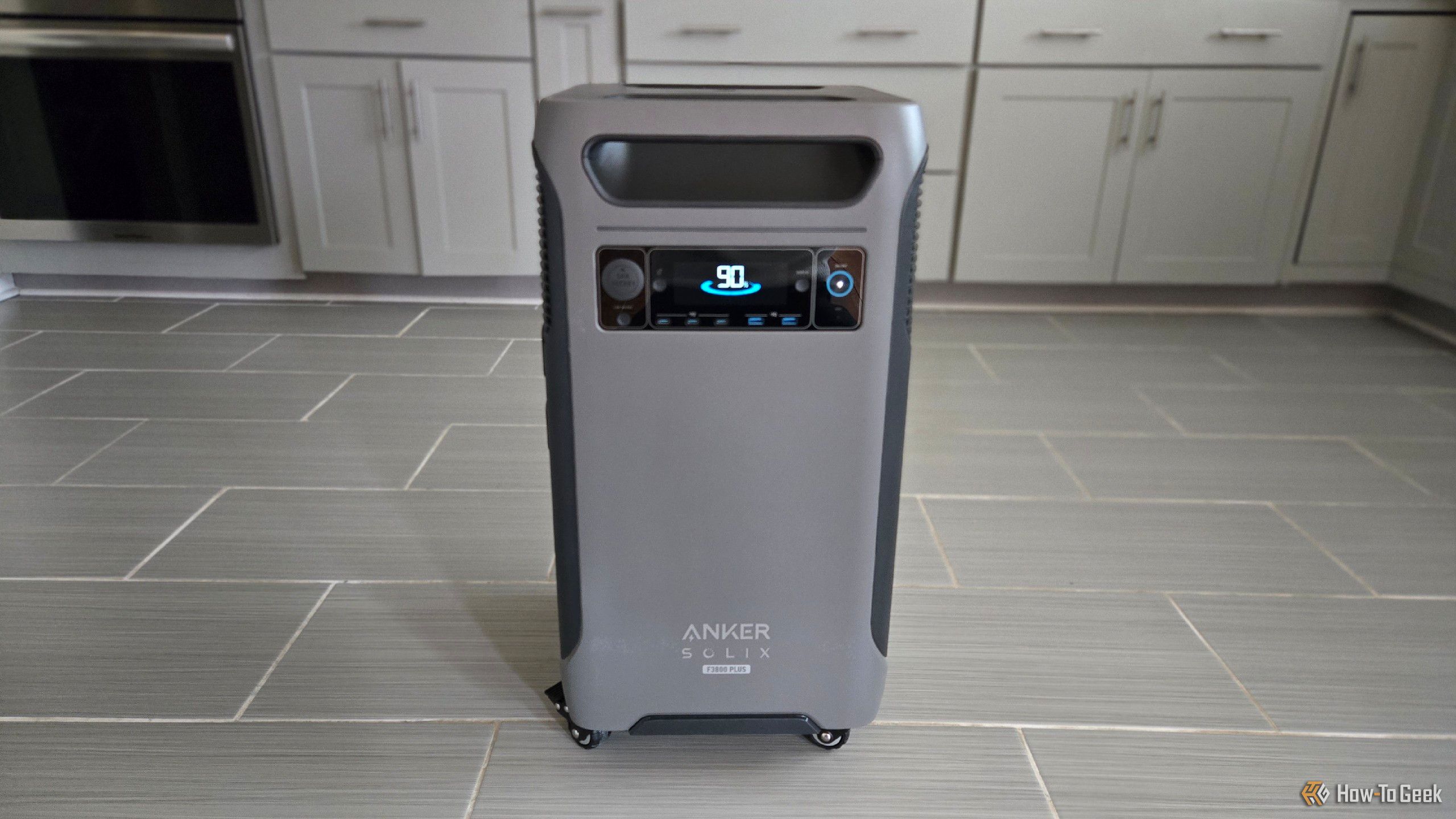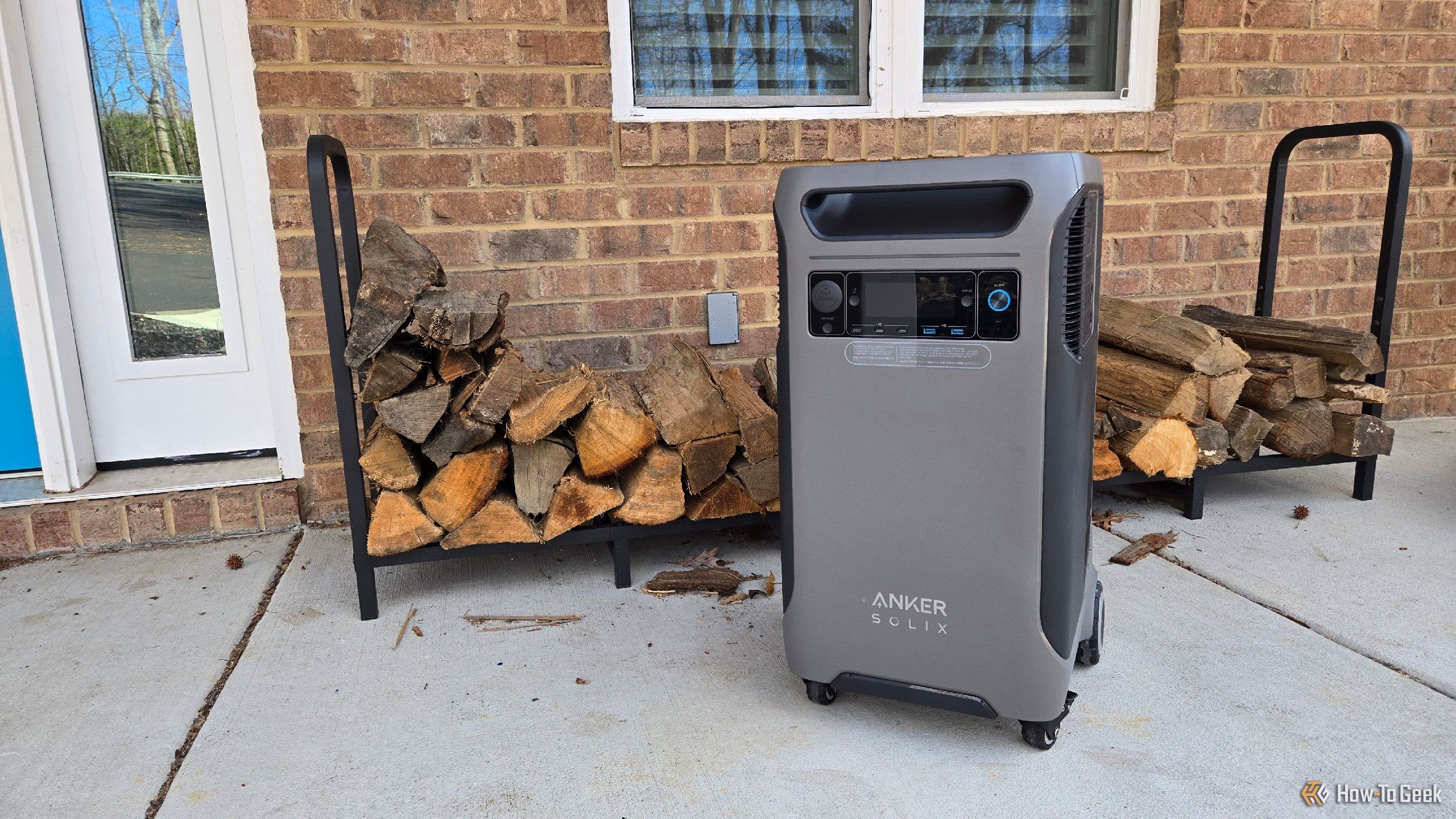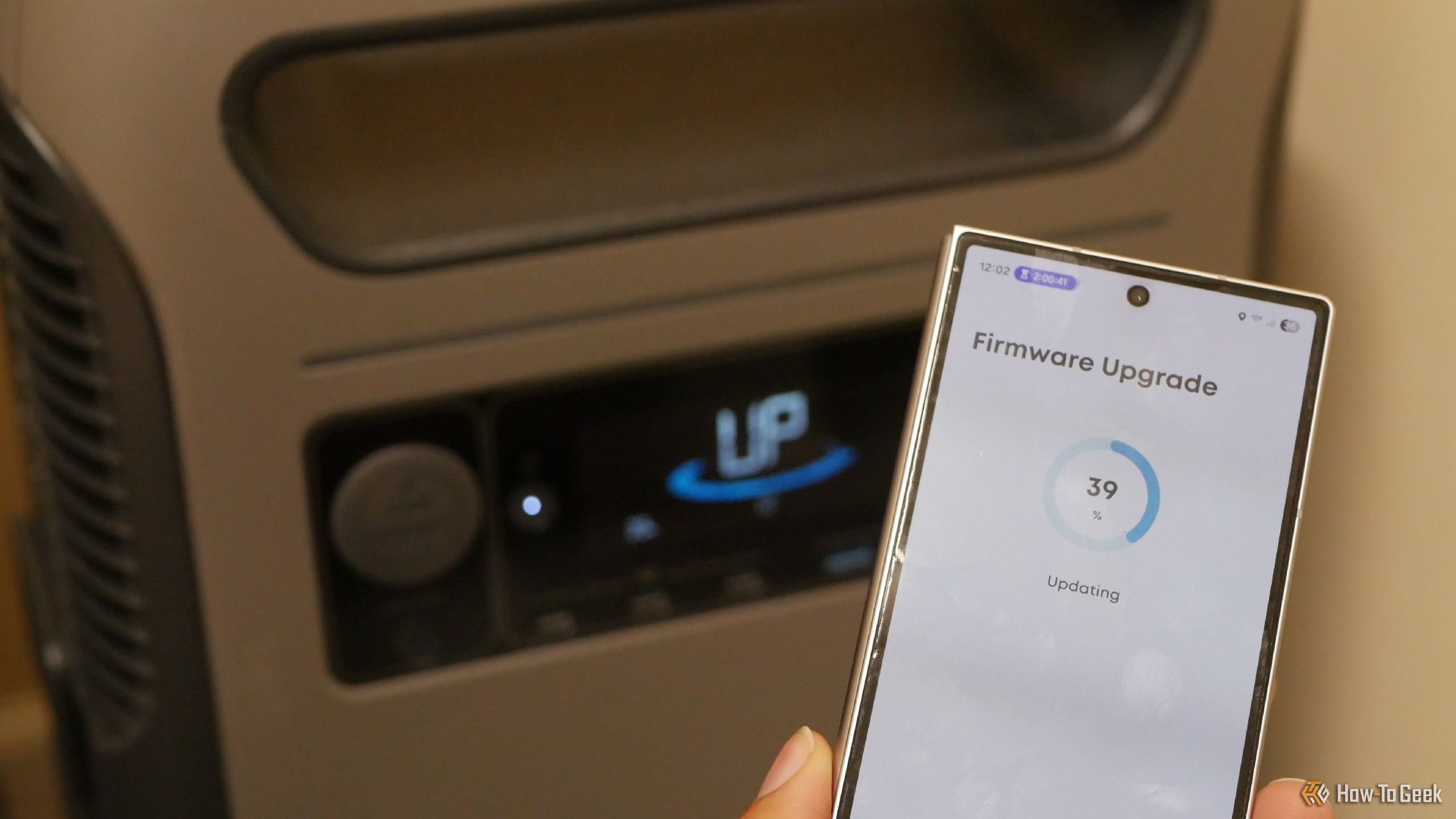When you buy a portable power station, you’ll likely see the battery size and power output—but there’s an important drawback that often goes unmentioned. Fortunately, while this is a problem, it’s one that a software update can fix.
The Anker Solix F3800 Plus Drains Itself While Idle
My Anker Solix F3800 Plus has a 3,840kWh battery. Unfortunately, this doesn’t give you the full picture of how long it will last.
If you plug in a fridge that pulls 100W an hour, you could reasonably expect 38 hours of runtime. But that doesn’t take into account how the F3800 draws power from its own battery to power itself. Energy is required for the system’s inverter to convert the DC energy in the battery into AC energy that most of our devices and appliances use. This energy usage is referred to as idle drain, since it’s power that will be consumed even if the unit is just sitting there being idle.

Related
Anker SOLIX F3800 Plus Review: Same Power, Now Much Easier to Charge
An ultra-versatile power station.
Anker doesn’t advertise just how much energy the F3800 Plud drains per hour, but the number has been reported as anywhere from 50 to 70 watts. That means an F3800 Plus left idle without powering itself down would run empty in just over two days without you plugging anything in. This may sound like a lot, but that number shrinks quickly once you start actually pulling power from the unit.
100W from a fridge combined with 70W from the inverter adds up to 170W per hour. At that rate, the F3800 Plus would run out of charge in just over 22 hours. I didn’t realize the drain would be this high when I first thought about buying this unit, and while I don’t have regrets, it’s still a bummer.
This Software Update Reduces Drain by 50%
Newer Anker power stations like the F3000 (a newer version of the F2000, not a smaller version of the F3800) have impressed reviewers with its significantly lower power drain. That made me happy to see, since I’ve dropped five-digit thousands of dollars into Anker power stations.
But improvements to newer models doesn’t necessarily do me any good, since I have no plans to purchase them.
Fortunately, these software improvements aren’t limited to new hardware. Anker has made changes to the software of the Anker F3800 Plus released earlier this year to make it run more efficiently. These changes have been rolled out in a software update for the Anker F3800 Plus that, in a blog post, the company claims reduces idle drain by half.
Applying the update is simple. I just need to load up the Anker app and connect to my unit over Bluetooth. I then start the update and wait for it to complete.
This is something I’m grateful can be done from a smartphone using an app. My family increasingly uses our phones and tablets to do most of our computing, and it’s increasingly frustrating to keep a PC around just for firmware updates.
The Battery Can Now Last Almost Twice as Long
Did the update deliver as promised? The F3800 Plus doesn’t tell you how much energy it uses on its own, only how much energy other devices are pulling. This is something I demonstrated following a recent string of outages.
Fortunately, the power station already does this math for us. Before the update, a fully charged power station would estimate that it could run for just over 2 days. After the update, it now says it can run for around four days.
This reduced drain is a huge difference when trying to extend every ounce of power during an outage. Don’t get me wrong—before the update, I already found an Anker F3800 Plus could weather most outages. I’ve tested mine through over three outages in the past year, and each time our power came back on within the day. Our power typically returns within eight hours. Following this update, I expect this unit to have an even easier time carrying us through most outages with energy left to spare.
At the time of writing, an update had only been released for the F3800 Plus. While I’m happy to see this, I have two of the original F3800 that Anker had not released an update for. Since there weren’t many differences between these two units, I hope to see a firmware update for that older model on the way.
This firmware update not only increases the utility of these portable power stations, but it increases the likelihood of me buying expansion batteries down the line, since I can now expect them to make these units last even longer.

Related
Instead of a Powerwall, I Backed My Home Up With Tons of Solar Generators
It wasn’t cheap, but it was cheaper.








Leave a Comment
Your email address will not be published. Required fields are marked *